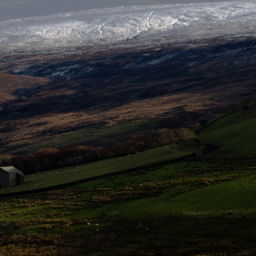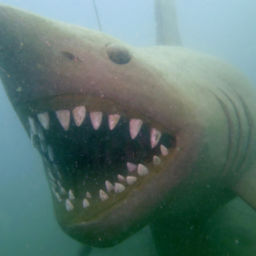The Saint Chamond, a French steamer built in 1913, fell victim to a German U-boat during World War I torpedoed and sank on April 30, 1918, 1.5 miles off St. Ives, Cornwall while carrying a cargo of steam locomotives.
The wreck itself is quite broken up, but divers can see between five and seven 82-ton locomotives on this dive.
Diving St. Chamond
Upon descent, divers will immediately see a locomotive lying on its left side with a shot line draped over it. You’ll also spot a round boiler with a firebox, hollow tubes and pistons to drive the wheels.
A few feet from the locomotive chassis lies the main body of the wreck. Although it’s mostly in pieces, some parts of the hull still rise from the seabed. Steel-hoop tires for the locomotive wheels and couplings for the main cargo pipes are scattered nearby. The propeller shaft is exposed towards the center of the ship, while a few curved ribs of steel are all that remains of the tunnel.
Moving along, divers can see a triple-expansion steam engine to the right of the crank. Further still, along the center line of the ship is a large pile of steel pipes. To the left of these pipes is another steam locomotive, lying on its side within the outline of the St. Chamond hull.
Other notable features
One of the original boilers from the St. Chamond stands upright just off of the left side of the wreck. Nearby, divers can identify the bow by a pile of anchor chain as well as two anchors with the disintegrated hull around them. A few feet forward from the bow, and slightly to the right, is the anchor winch. Here is the shallowest part of the wreck, at 65 feet (20 m) during low tide.
Returning along the right side of the wreck, divers will find a steel dome, thought to be the remains of an item of cargo. Further along this side are two locomotives. The chassis of the first stands upright, while the second locomotive sits beside it. A third locomotive is rumored to be in this area, but few have seen it.
Further toward the back and along the right side of the wreck is another small pile of steel pipes, as well as another locomotive. This one is intact, resting slightly on its side just outside the outline of the hull. Inside the outline of the hull, divers can see two broken winches.
There’s one more locomotive past this point, suggesting that either the original manifest of cargo was incorrect, or that more locomotives (than the five stated) were loaded on the vessel at the last minute. Some steel pipes and scraps of wreckage are scattered along the seabed from this point at a depth of 79 feet (24 m) during low tide.
Toward the right here are the remains of the stern, with part of the propeller shaft sticking out of a small V-section of the keel. This leads to a partially buried steep propeller with the remains of the rudder laying nearby.
When to dive
The average visibility on the wreck varies between 16 to 33 feet (5–10 m) while the depth at low tide is between 66 and 98 feet (20–30 m). Tides around the wreck can be very strong and it’s best to dive the St. Chamond during slack water.
All images courtesy of April Milne











